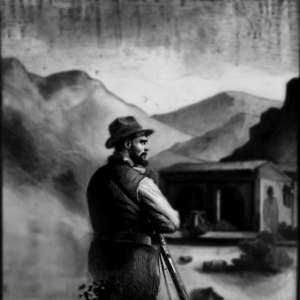
The desert of the American West was choked by Prohibition's grip. But beneath the dusty surface, a spark of defiance flickers.
A man sees an opportunity. With his loyal partner by his side, they embark on a daring scheme.
Will their defiance end in a showdown, leaving another tombstone bleaching in the unforgiving sun?
We're talking about the legend of Jack Longstreet, the outlaw who dared to defy Prohibition in the heart of the Nye County desert.
TRANSCRIPT
Nye County became a dry county not because of the climate, but due to the suffocating grip of Prohibition. Yet, amid the shuttered saloons, Jack Longstreet and his partner, Fannie Black, saw not just adversity but opportunity, a chance to defy the law and carve out their own version of prosperity.
Jack’s early life remains shrouded in mystery, but by 1880, he had made his mark in the Arizona Territory before settling in Nye County. A man of many roles, saloon keeper, pharmacist, and prospector, Jack Longstreet was known for his unyielding spirit and his ability to hold his ground against adversaries. His deep respect and integration with the Southern Paiute tribes marked him as a unique figure in the rugged landscape of the Wild West.
When Prohibition swept through Nye County, Jack and Fannie found themselves at a crossroads. A lucrative arrangement with a Tonopah bootlegger with connections in Los Angeles, who stored his contraband at Jack’s ranch, provided them with a clandestine income, $500 a month.
After their first successful run with illicit product to L.A., a surprise visit was made from lawmen on a day Jack and Fannie were out of town. Their outpost was raided, and alcohol was poured over the still and set aflame.
Jack and Fannie were shocked on their return later that evening.
The next day brought an unexpected visit from the Nye County District Attorney and his posse, intent on investigating the alleged illegal activities. Armed and unwavering, Jack met them at the door with a steely resolve. With a long-barreled rifle in hand, he answered firmly, "Come on in, but nobody's coming out.”
His terse invitation left the lawmen reconsidering their pursuit. Perhaps Jack Longstreet wasn’t a man to trifle with, their unspoken exchange implied. They likely knew of his reputation.
With a quick retreat down the canyon, the lawmen left, leaving Jack and Fannie to ponder their brush with the law. But who was this enigmatic outlaw, revered in local lore?
A historical highway marker in Amargosa Valley describes Mr. Longstreet as more than just a gunman, he was a vigilante of sorts, ensuring justice where the law fell short. His audacious acts, like kidnapping a mine foreman until they paid the Paiute workers with real currency instead of worthless scrip, underscored a complex moral code that defied easy categorization.
Jack Longstreet’s legacy begs deeper questions. Was his defiance of Prohibition merely a pursuit of profit, or did it stem from a deeper conviction, a desire for autonomy and justice in an increasingly regulated frontier?
Though Jack has long since departed this world, his legend endures. His final resting place alongside Fannie’s in Belmont Cemetery stands as a testament to a time when the Wild West was not just a battleground of outlaws and lawmen, but also a proving ground for resilience, resourcefulness, and the unyielding pursuit of freedom beneath the expansive desert sky.
Also check out:
The John Andrew Longstreet grave stone at the Belmont Cemetary
The road sign on Nevada Route 373 near the Longstreet Casino.
"Tonopah: The Greatest, the Richest, and the Best Mining Camp in the World" by R. McCracken, page 18.
Check out our full podcast archive here.


